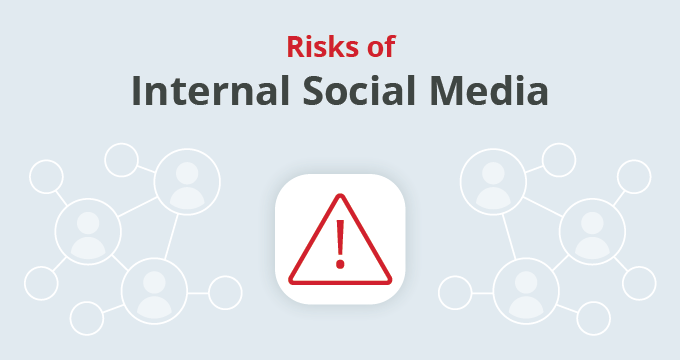How can we define social engineering? Social engineering refers to any cybersecurity exploit that depends on the desire of others to help. Whether or not an attacker can persuade another person into making a mistake is a key to a successful exploit.
It is the goal of a social engineering attack to provide the attacker access to a target’s digital or physical credentials so that they may abuse them. As the attacker gains early access with soft skills, they can next use their hard skills to increase the level of access they have.
If it’s still not clear what is social engineering, the best way to describe it is that it’s a type of a cyber attack where an attacker tricks a user to obtain sensitive information through emotional manipulation.
Out of urgency or fear, the user provides the requested information without any awareness of the scam. Interestingly, over 70% of data breaches begin with social engineering.
How to recognize social engineering attacks
It can be difficult to make a distinction between social engineering and phishing in a skilled operation. Employees are frequently tricked into providing sensitive information or altering account settings through the use of social engineering tactics.
Playing on the concerns and emotions of a targeted person is an important part of social engineering. Because the attacker doesn’t want the targeted user to think about the request, they will utilize fear and a sense of urgency in their social engineering tactics.
If you’re wondering what is social engineering attack characterized by, the following are some of the most prevalent characteristics of all social engineering attacks:
- An attacker may incite fear in a targeted user by threatening to delete their account or by pretending to be a senior executive demanding money from the user in order to gain access to their credentials.
- By using a fake email address and a domain name that seems close to an official one, the attacker can fool the intended victim into thinking it’s legitimate.
- An email account can be hacked and spammed with harmful messages to the victim’s contact list. You may want to be wary about clicking links from friends if the message doesn’t seem like it’s coming from a person you know personally.
- Phishing links are used in conjunction with social engineering to fool people into disclosing sensitive information through unprofessional links on a website. Even if the website appears to be authentic, you should never submit your login information after clicking on an email link.
- Scammers frequently offer money in return for money. It’s best to ignore any offers that seem too good to be true.
- A smart assault might employ email attachments to implant malware on a company’s computer instead of luring customers into disclosing personal information. Absolutely avoid running executables or macros on a computer from an email message that appears harmless.
- If you enter a conversation with a stranger, request that the sender confirm their identity. If an attacker doesn’t want to be identified, simply disregard the request.
What are the types of social engineering attacks?
Attackers utilize a variety of typical tactics to coerce the victim into taking a certain action while also making the attack appear more genuine.
Understanding how social engineering attacks are disguised is critical to catching them early on. It is usual for social engineering techniques to have a few aspects in common regardless of what the threat actor is trying to accomplish.
The following are a few typical methods.
Phishing
The most common type of phishing, email phishing is an effort to obtain confidential information by sending an email that looks to be from a trusted source. In this case, it is not a targeted attack and can be carried out in large groups
Phishing can also be performed via SMS or make an automated phone in which case it’s called smishing or vishing.
| Related: 7 Tips on Recognizing and Preventing Phishing Scams |
Executive (CEO) fraud
Fraudsters prey on the sense of urgency that employees feel when an executive asks them to do something, therefore they’ll pretend to be the CEO or another executive to encourage them to take action.
Baiting
This is a popular tactic used by attackers to lure victims into making a minor payment. Payment for delivery or any other cost-covering is normally required in order to take advantage of the deal.
Piggybacking or tailgating
Piggybacking and tailgating both have a direct impact on physical security. Tailgating is the act of sneaking into a building when an uninvited visitor sees a door open. When an authorized individual opens the door for an illegal person to enter, it is called piggybacking.
Employee retaliation
In return for money or other promises, resentful employees may be persuaded to provide sensitive information to an attacker.
How to protect against social engineering
Employees must know what is social engineering and be alert to the warning signals of social engineering attacks so they can take action to prevent them.
When it comes to educating and empowering your employees to spot social engineering threats, there are a few guidelines to adhere to:
Do some research
Before reacting to any suspicious activity, it’s a good idea to do some research. People will often discuss the social engineering strategy online if the hoax is widespread.
If you have any suspicions, it’s best to see if someone already shared similar concerns. It can help you detect and avoid social engineering threats.
Be careful when opening links and downloading files
Links in emails can lead to websites that will download malware or attempt to steal credentials. If you receive an email from someone you don’t know, don’t open it.
Also, be careful before downloading anything. Emails requesting you to download files immediately should be ignored or checked to see whether the request is genuine.
Anti-malware software is usually able to stop an employee from downloading hazardous software, so make sure it’s up to date.
| Related: Phishing Test: Check Your Employees’ Resilience |
Beware of suspicious behavior from your contacts
It is important to keep an eye out for odd conduct from your contacts. If a colleague sends you an email with a link to a website and no other information, you should be on the lookout for a scam.
Don’t share sensitive information
Employees should be mindful of the sensitive nature of the information they post or send via email or social media.
Don’t share personally identifiable information (PII) or passwords with third parties. If you get a request for data, treat it with care. Before agreeing to the request, ask questions and verify the sender’s identity.
Create a policy
A social engineering policy should be created to prevent and mitigate social engineering attacks. The policy should be created in conjunction with senior management and employees.
The document should outline how employees should respond to social engineering attempts.
Provide regular training and real-life examples
Teach your employees what is social engineering and how to recognize social engineering attacks. Give them training that includes real-world examples of how it works in the actual world.
In conclusion
Social engineering attacks are very common and can have serious consequences. They are successful because they rely on human emotions and desires rather than technical exploits.
Regardless of the attacker’s intentions, social engineering attacks aren’t difficult to prevent. Having a few training sessions with your employees can often be enough to prevent social engineering attacks.
You can also safeguard your critical data in an archive to ensure compliance with any regulations that mandate that you retain electronic documentation and communications.
Such tools usually include various security protection measures like multi-factor authentication, encryption and customizable user roles to restrict access to sensitive information.In this way, you can make it more difficult for both employees and attackers to locate the information and trigger a data breach.
Read Next:Managing Risks of Internal Social Media Platforms |











